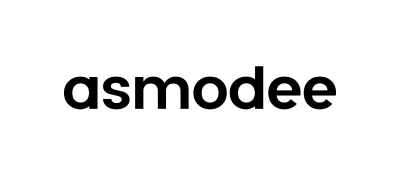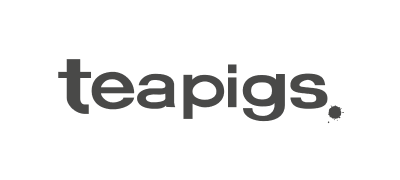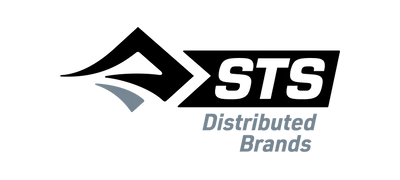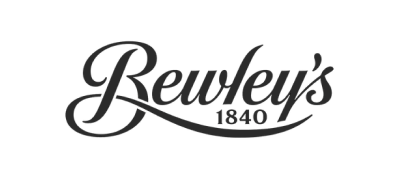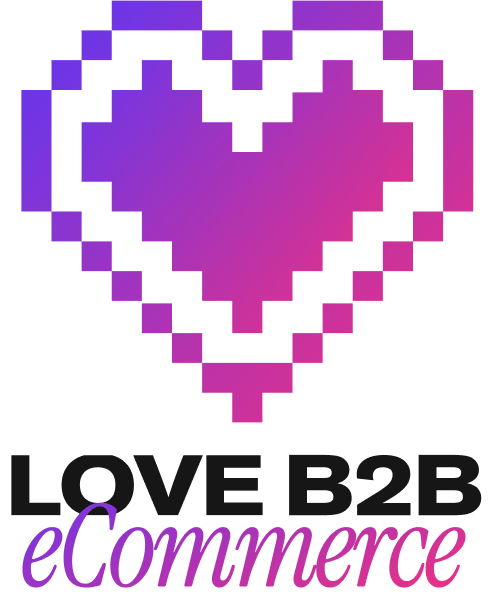‘How can I become a wholesaler?' is one of the most-searched terms within B2B in 2025 - and it’s no wonder! With B2B set to be valued at $36 trillion in 2026, established direct-to-consumer (D2C) brands and newbies alike are considering developing a wholesale business and getting in on the action!
This guide is designed to walk you through all the steps involved in becoming a wholesaler, whether you’ve sold online before or are new to eCommerce entirely. If you’re already feeling a bit overwhelmed by the acronyms, don’t worry - just head to our beginners' B2B glossary.
Right, grab a cup of tea and let’s dive in…
How do you become a wholesaler?
We’ve broken the big topic of ‘how to sell wholesale’ down into 6 easy steps for you. While getting started can feel overwhelming, this handy checklist aims to make it feel more accessible for you to get started selling wholesale!
- Choose the right products to sell
- Find a reliable supplier
- Organise your operations
- Establish B2B pricing and payments
- Create your online store
- Devise a go-to-market strategy
1. Choose the right products to sell
Fill a need; find a niche
So, you’ve decided to sell online - but how do you become a wholesaler? Whether you’ve got a product or range ready or you’re still scoping out what to sell, make sure it fills a gap in the market. Finding or creating a niche is essential, as is ensuring it’s going to be profitable and in demand!
Start by doing some discovery and looking at what products are most commonly purchased in bulk. Check out what other people are doing in the market - what are they selling, what channels are they using, and how much do those items typically go for?
Consider seasonality
Remember that seasonal demand definitely still exists outside of the D2C world! Think about schools restocking supplies ahead of the new term (like notebooks, stationery etc.), through to fashion brands selling summer clothes ahead of time.
You can lean into seasonal demand, or go for products that have a steadier year-round level of interest. This will help you a) manage your inventory better and b) understand your customers’ buying behaviour.
Carve out your USP
What is it about your store that will make people want to shop with you instead of other businesses? Is it the quality, the price, or the speedy shipping? While wholesale is a great opportunity to create revenue, it’s increasingly competitive - so make sure you know what makes you different before you get started!
Research what other brands in your industry are doing and what products they’re not selling; get on Reddit or similar forums to see what people are talking about, what they’re struggling to find online - this will help you become the go-to for that product! Draw on your existing expertise in your area, whether it’s something you’re passionate about yourself or simply know a lot about!
Think about your buyers
Who are you ideally selling to? Do you want to sell into offices, for example, that might restock supplies every quarter? Maybe you want to sell to bigger stores that can carry your line of products, or sell your coffee in bulk to coffee shops.
Either way, think about what your dream buyer looks like and what channels they might want to order through. Are they likely to be using modern tools (like tech companies restocking office supplies) or legacy systems (like smaller coffee shops wanting to order over the phone)?
Explore B2B buying behaviour
If you’re new to wholesale, you might be wondering how exactly B2B buyers make their purchasing decisions. Do some research into how often wholesaler customers in your chosen niche typically buy - remember that B2B is more about repeat, regular orders and less about impulse purchasing!
While typical D2C buyers might be swayed by a well-timed Instagram advert, your target procurement managers are likely ordering from the same spreadsheet at a set time each month.
2. Find a reliable supplier
How to sell wholesale from a supplier
Finding the right supplier for your B2B eCommerce business doesn’t need to be as daunting as it sounds! You get started pretty quickly by doing an online search and reaching out directly to manufacturers or suppliers. Post on online forums, ask for recommendations, and research relevant supplier networks.
Establish expectations
Setting service-level agreements (SLAs) is crucial - ensure you and your suppliers are on the same page about delivery timeframes, notice of issues, quality control checks, contingency plans, and payments. Establishing these ground rules early on will make for a great long-term relationship - and much less stress if something does go wrong!
Find multiple options
The last thing you want is to find a great supplier, cut ties with all other prospects, and then get let down with nobody else to turn to! Keep a relationship going with multiple suppliers so that you’ve got a backup ready if you need it.
Consider logistics
Ensure that wherever your products are coming from works for your target market. There’s no point in finding an incredible supplier in a different country if it’s going to cost you a small fortune to ship the products to your buyers.
Quality control is key
Before you invest in inventory from a new supplier, don’t be scared to ask for a sample order. It’s worth it for seeing how the products arrive (e.g. are they packaged well or damaged), how good the quality is, and to get some product shots for your website and marketing.
3. Organise your operations
Make it legal
Depending on where you’re based, you may need to acquire a licence to sell online. A quick search for ‘how to sell wholesale in my area’ should help you find the legal info you need! Permits vary by location and industry, so be thorough with your search.
Consider a business licence, sales tax permit, and make sure you register your business! If you decide to scale and employ more people, you may need to revisit your licences or gain new accreditation and insurance!
Consider finances
Be honest about how much money you have upfront, and look into what a realistic profit margin is. Consider how much stock you can afford to buy now, and what the average wholesale price for it is.
Bear in mind that you’ll be selling products at a discounted rate for your B2B buyers, so the profit margin will be slightly less than if you were selling directly to consumers. Keep scrolling to find out more about pricing your wholesale store!
Look into shipping
Depending on what items you plan on selling, you’ll need to think about delivery options! Are you going to sell in the country you’re based in or internationally? If you’re selling heavy products, ensure your item costs reflect this, or set up weight-based shipping rules to ensure you’re still making enough profit!
Consider selling pallet-only for items that are going to be timely and expensive to unpack - or start off with smaller, lighter items and set some minimum order values to ensure you’re making enough money from each customer!
Think about packaging
How are you going to package your items? And will they come to you from the supplier or go straight from a warehouse to the buyer? You’ll need to think about how you package your products - do you want branded wrapping and labels, do you need bubble wrap and packing peanuts, are your items fragile or ‘oversized’?
These might seem like simple afterthoughts, but you’ll save time and money by considering these elements early on! Remember that you don’t need to do this all alone! There’s a wealth of expertise available and some fantastic companies you can partner with to help you a) make these decisions or b) take on the legwork and do it all for you!
4. Establish B2B pricing and payments
One of the key considerations in terms of how to sell wholesale is establishing B2B pricing.
Configure customer-specific pricing
The main differences between B2C and B2B eCommerce come down to pricing! The cost of each product will vary, but you still need to ensure there’s enough profit across your B2B pricing strategy to make it worth your while.
You’ll likely be selling to a few different types of buyers - like smaller brick-and-mortar stores, online buyers, and larger businesses. Each of these customers is likely to have slightly different prices, so make sure you show each customer group their bespoke, specific pricing!
Calculate production costs
One of the easiest ways to configure your B2B pricing is to calculate the total cost of producing a product, also known as the cost of goods manufactured (COGM, catchy, we know!). This should include costs associated with:
- Production (raw materials, packaging, manufacturing)
- Labour (including what you want to be paid, e.g your hourly rate based on how much work is involved)
- Remaining overhead fees (like renting a warehouse, paying utilities, and getting insurance)
- Expenses (marketing, postage/ shipping, and advertising)
Calculate profit margins Now you’ve got your COGM, you need to work out how much you’re going to charge for your products - also known as your markup. Typical B2B markups sit around 50%, meaning you need to use the following formula to figure out your new B2B pricing: total cost + (total cost * markup%) = B2B price. Remember, the total cost is what we calculated above!
For example, if your total cost you $15 and you want to start with a 50% markup: $15 + ($15 * 0.50) = $22.50
Choose your payment methods
Many businesses may not use bank cards to pay for large wholesale orders, instead preferring invoicing, purchase orders (POs), or something called net terms, where buyers are given a certain number of days to make a payment.
You may want to start out with upfront payments only, as this will improve your cash flow and is less likely to lead to customers owing you money for larger orders! You can assign differing payment methods to different customers based on a variety of factors - for example, new customers can pay by card, but trusted customers can pay over time.
5. Create your online store
The best B2B eCommerce platform
We may be biased, but this is our favourite part of the process when it comes to how to sell wholesale! Whether you choose to build your B2B eCommerce store on Shopify or another platform (like Wix, BigCommerce, or Magento, to name a few), it’s a straightforward setup.
Find the right platform for your business using our summary of the best B2B eCommerce platforms!
Add in-demand B2B features
If you ever find yourself asking, ‘How can I become a wholesaler?’, there’s a simple answer. Add wholesale functionality to your website using a tool like SparkLayer and make bulk ordering easier for your buyers!
SparkLayer helps you meet wholesale buying expectations by overlaying features like wholesale pricing options, quoting (great if you’re selling textiles or custom items), customer groups (perfect for giving each buyer their own tailored price and product lists), and more.
Find out more about SparkLayer’s B2B features and how to add them to your website with one simple code snippet!
6. Devise a go-to-market strategy
Use what you have
If you’re still wondering exactly how do I become a wholesaler, don’t worry - we’re almost there! Now that you’ve set up your store and mapped out all the practicalities behind actually selling, it’s time to go to market. Start off with what you have rather than jumping straight into costly marketing campaigns - use your website.
Communicate with existing buyers
If your main concerns are focused on ‘how can I become a wholesaler when I have a D2C store?’, you’re in a great position! Let your existing D2C buyers know that you now have a wholesale channel - some of them may be buying from you to sell in bulk to their customers already, so would be thrilled to have a better way to do this with you!
Brand your business
You don’t need to work with an agency straightaway or download costly design software - do some research to choose a name that replicates what you sell and why, mock up a simple logo using free online tools, and get started.
Unlike D2C buyers, B2B customers aren’t overly fussed about fancy design and complementary colour palettes - they want a reliable, easy-to-use platform that simplifies their buying experience. Once they find a brand that allows them to quickly order what they need at a reasonable price, they’re unlikely to be swayed by a competitor based purely on their branding!
Launch your wholesale
How to sell wholesale successfully is dependent on tailoring the experience - so make sure your B2B store (and its reduced pricing!) is kept separate from any existing D2C setup. The last thing you want is your D2C buyers getting in on the discounted pricing!
To do this, you can create a wholesale login - B2B buyers can complete a registration form for you to approve before you grant them access. Not only does this help balance your hybrid setup, it also means that your competitors can’t see your pricing by doing a quick online search! Locking your products and pricing away is a good way to stay ahead of the game in an increasingly competitive landscape.
Meet your customers where they are
While the expression has become overused, the concept remains valuable! If you’re selling within a niche like foodware, for example, research local food fairs and expositions and get a booth - or, if you’re short on cash, attend for free to scope out the competition and network.
Join relevant online communities and forums to promote your product (either organically or through paid adverts where relevant).
Incentivise new buyers
While offering discounts and deals might feel a bit counterintuitive when you’re just getting started, it can be a strong way to bring new customers on board. Remember that it’s unlikely you’re the only person selling the products you sell - so getting a buyer to swap suppliers can be tricky at first!
Want more advice on marketing your B2B eCommerce store? Head to our Love B2B eCommerce resource hub to sign up for notifications of our future resources.
Final thoughts
So - how do you become a wholesaler? By getting started!
Taking that first step can feel pretty daunting, but we’re here to help. Our Love B2B eCommerce resource hub is dedicated to supporting wholesaler businesses, whether they’re just starting out or scaling up.
Wondering how to sell wholesale using SparkLayer? Book a personalised demo with our team here. If you’re a SparkLayer user and want tailored support, book a call with our Customer Success team.





